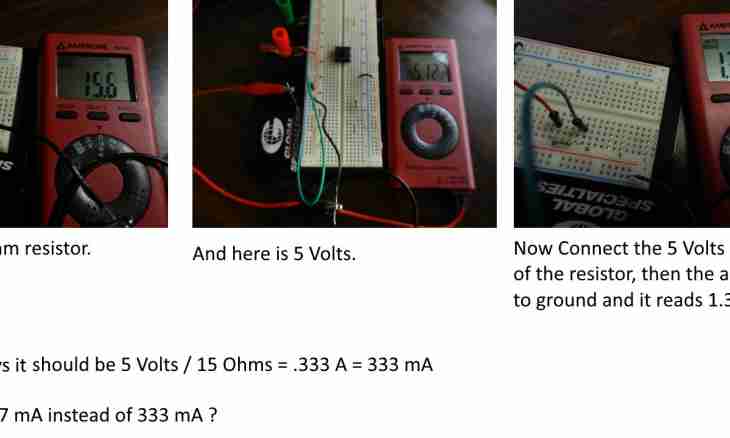The law of Ohm - the most important law of electrical equipment. When calculating parameters of any electrical circuits this simple ratio is surely used: I=U/R, or formulas following from this law.
The sizes characterizing electric current
The law of Ohm, unlike, for example, Coulomb's law, is not the fundamental law of physics. It has practical value. In the nature there are substances which are carrying electric current - conductors and not carrying out - dielectrics.
In conductors there are free charges – electrons. In order that electrons began to move amicably in one direction, electric field which "will force" them to move from one end of the conductor to another is necessary. In the simplest way the ordinary battery can create such field. If on the end of the conductor a lack of electrons, it is designated by the sign "+" if surplus, "-". The electrons having always a negative charge, naturally, will direct to plus. So in the conductor the electric current, i.e. the directed movement of electric charges is born. That to increase it, it is necessary to increase electric field in the conductor. Or, as speak, to put bigger tension to the ends of the conductor. Electric current can be designated by letter I, and tension – letter U.
It is important to understand that the formula R=U/I allows to calculate only resistance of the site of a chain, but does not reflect dependence of resistance on tension and current.
But conductors on which free electrons move can have the different electrical resistance of R. Resistance shows a measure of counteraction of material of the conductor of passing for it of electric current. It depends only on the geometrical sizes, material of the conductor and its temperature.
Each of these sizes has the units of measure: Current of I is measured in Amperes (A); Tension of U is measured in Volts (C); Resistance is measured in Ohms (Ohms).
Ohm's law for subcircuit
In 1827 the German scientist George Om established mathematical connection between these three sizes, and formulated it verbally. So there was a law called in honor of his creator by Om's law. Its full formulation is as follows: "The current proceeding on an electrical circuit is directly proportional to the enclosed tension and is inversely proportional to chain resistance size".
Not to be confused in a conclusion of derivative formulas, arrange sizes, in a triangle, as in figure 2. Close a finger required size. The relative positioning of remained will show what action needs to be made.
The formula of the Law of Ohm has an appearance: I=U/R In other words, the more tension, the is stronger current, but than resistance is more, that current is weaker.

